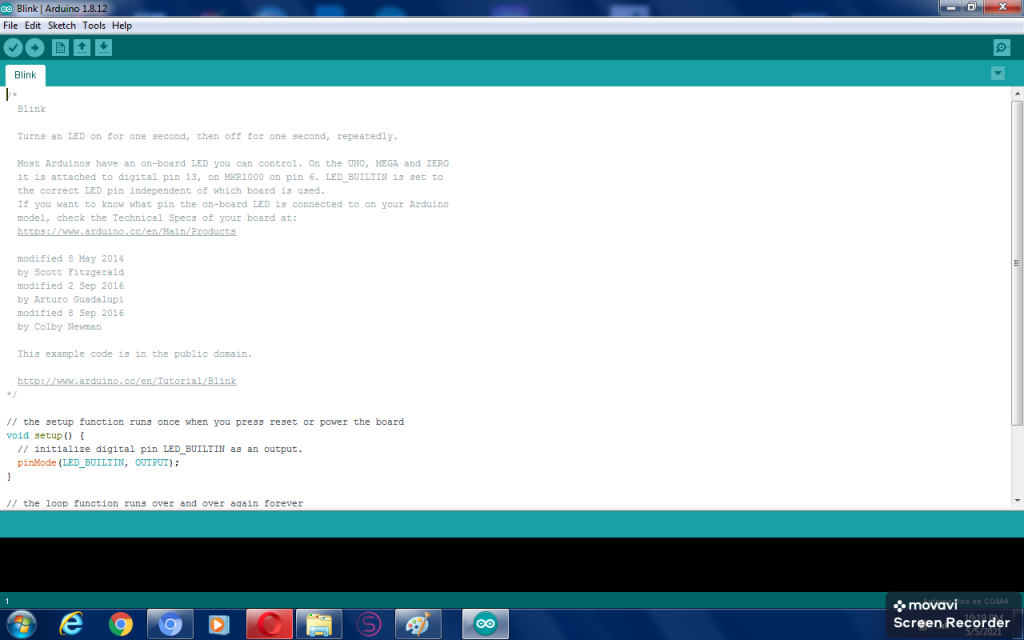Here we will talk about how to get started to make the Arduino do something.
The easiest way to start is to get the Arudiuno software on yuor computer and plug in it in and open up one of the included programs called a “sketch”.
You can simply plug your usb cable rom the Arduino into your personal computer. The preinstalled blink program would blink on your board.

To actually create or run programs (sketches) you have to install the Arudino software.
The boards come with instructions and it could be a little complicated if your older computer does not contrain the correct Java SDK version at which point you would have to install that first.
If it all works and you see your Arduino sotware pop up on the screen then you are good to go.
Try to load a program and get familiar with the top menu options and the controls at the bottom.
One o the main buttons at the bottom wll compile the code and get the ball rolling unless it shows you error messages at the bottom.
Now you will start by looking at some of the built in programs.
They are written in a language called C which has always been considered a proessinoal complicated language which it is…and it isn’t.
Most programmers in the old days would start with a language called BASIC.
Today most STEM toys allow you to start with programs and techniques that are even easier to learn the basics of programs.
But for now you will look at the complicated mess of C code and try to see what parts you will leave alone and what you will change.
The beauty of C and its newer cousin C++ is that thinks come in chunks called libraries.
So usually what you want to get done has already been written and is in a library so you simply copy one line which drags that particular library into your program. Done deal….well not really but its a lot easier than writing everything from scratch!
So lets deine what a programming language is and then list of the parts of the average C program or Sketch in Arduino.
The opening lines including a Definition and then a bunch of variables, constants, if statements and numbers being compared and groups of things called functions and some kind of action or output.
All sketches will have at least 2 parts called the setup and loop.
void setup() {
}
void loop() {
}
Void tells the compiler that the function does not return a value but sometimes they do return a value that may be needed.